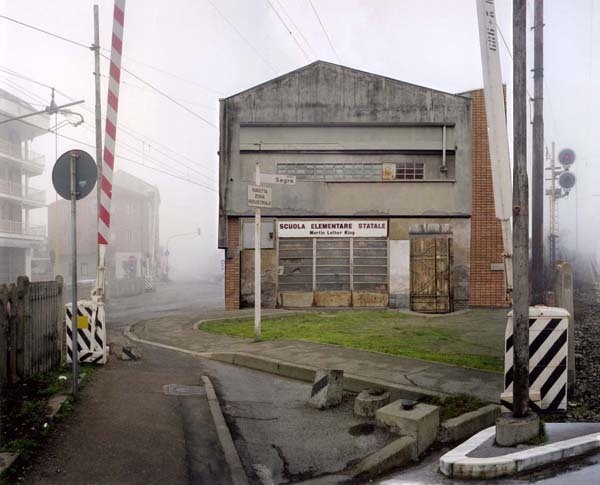
Scuola elementare statale, 2007. Colour photography on forex. 40 x 50 cm. Edition 1 of 2. |
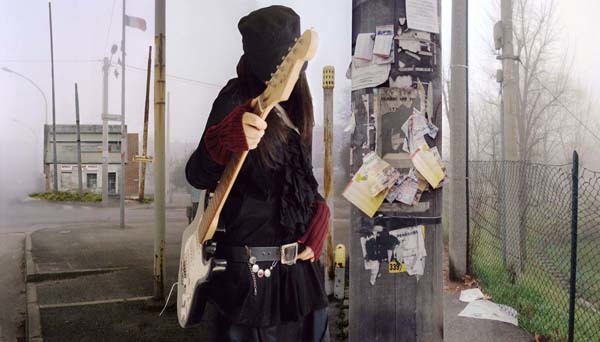
Después de la escuela, 2007. Colour photography on forex. 40 x 70 cm. Edition 1 on 2. |
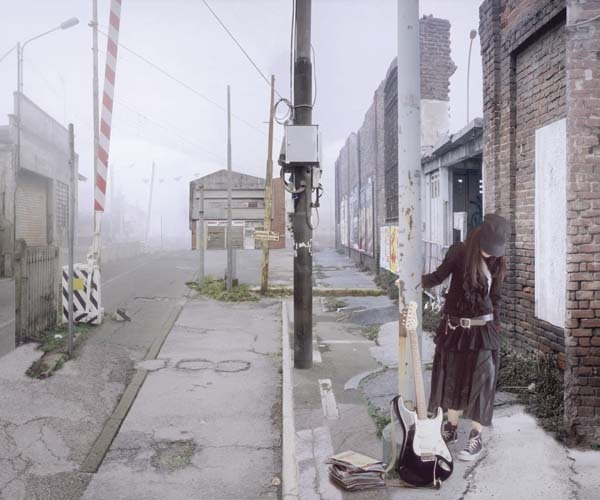
Vicenzina en la escuela I, 2007. Photographic print on PVC. 250 x 300 cm. Edition 1 of 2. |
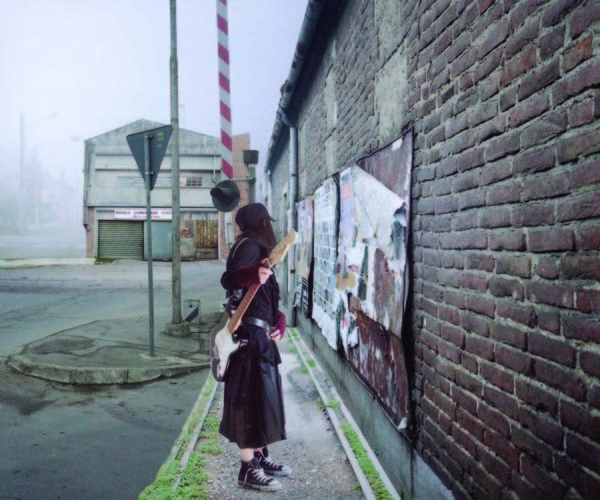
Vicenzina en la escuela II, 2007. Photographic print on PVC. 250 x 300 cm. Edition 1 of 2. |
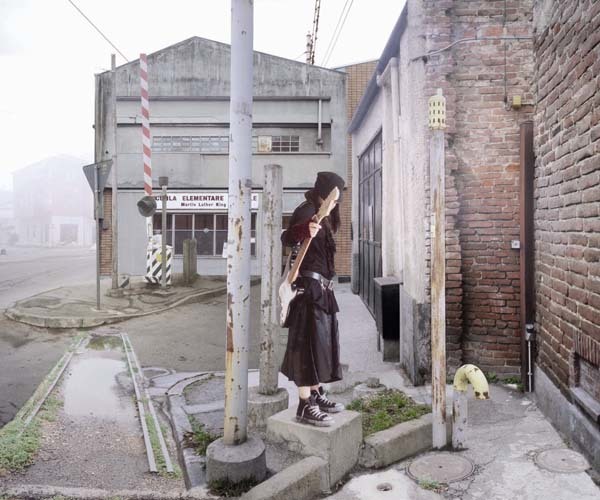
Vicenzina en la escuela III, 2007. Photographic print on PVC. 250 x 300 cm. Edition 1 of 2. |
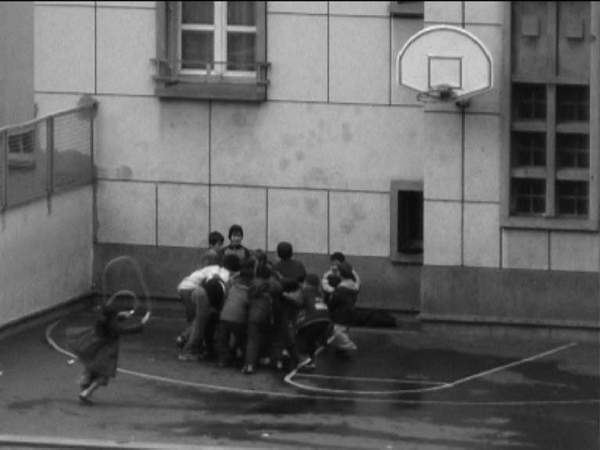
La escuela, 2007. Video. 1'45". Edition 1 of 5. |
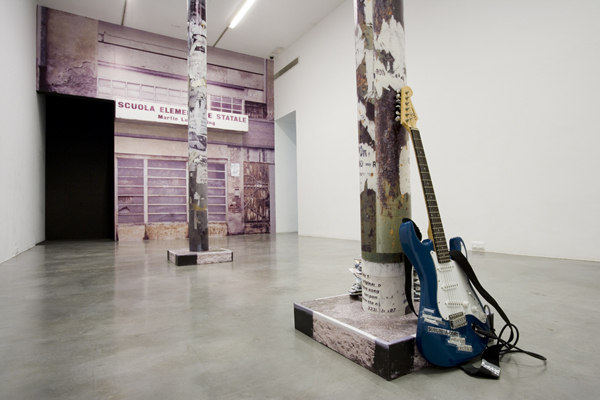
La escuela, 2007. Installation. 2 PVC columns, electric guitar, collage. |
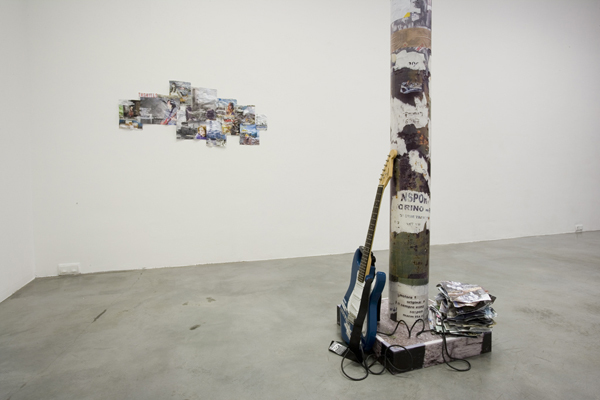
La escuela, 2007. Installation. 2 PVC columns, electric guitar, collage. Unique edition. |
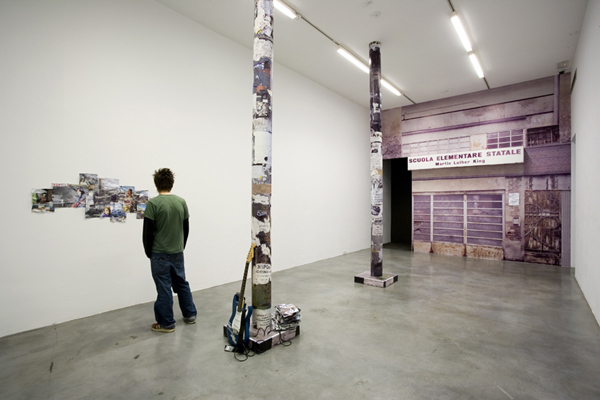
La escuela, 2007. Installation. 2 PVC columns, electric guitar, collage. Unique edition. |
Martin Luther King”Public elementary school
The idea for this second solo exhibition in Galería Oliva Arauna was born from a photograph we have taken of the "Martin Luther King" public elementary school, situated in a suburb of Turin.
"Vicenzina and the factory" is instead the title of a song by Enzo Jannacci, a famous italian singer and songwriter, dated 1974.
Putting together these two suggestions, we have thought of a modern Vicenzina, who's not standing anymore in front of the factory, her factory, as the song says, but in front of the school, her childhood school.
The story told in this project creates a relation among childhood, music and the process of demolition of all those public buildings giving an identity to public places overall, which is taking place in the last years.
We have tried to imagine a pessimistic but foreseeable future in which the "Martin Luther King" school lot will be sold by estate agents and consequently pulled down to make place to more profitable constructions.
The 1070's Vicenzina, in the melancholic song by Enzo Jannacci, had maybe lost her job, while our Vicenzina, dressed in a dark style, has by now lost her childhood and, standing in front of her old school, whose facade has been changed many times in time, cannot do anything but sing a goodbye song to that place which allows her to maintain her memories alive.
On the big PVC prints of the first room, the recurring elements are the tumbledown walls of the factory under demolition, the facade of the "Martin Luther King" school, electricity poles scattered everywhere and a level crossing of an abandoned railway station; in the forefront, a feminine figure (Vicenzina), playing her guitar in the street next to an electric pole in front of her school.
In the second room, two three-dimensional electricity poles are covered with anonymous messages and announcements of people looking for jobs and a real electric guitar is leaning at the base of one of the poles. Next to it lays a small pile of crinkled collages, taken from music magazines.
At the back of the big room a wall divides the space. On the front a wallpaper shows the nearly actual size of the "Martin Luther King" school facade. From the side entrance it is possible to access the room where the video is played: Vicenzina singing in Spanish is accompanied by the images og a group of children scuffling in a school's hedged courtyard.
Taking its origins from diverse realities fragments, from far suggestions which create a tale of atmospheres and reflections and analysis on life in areas placed at the limits of big cities, once they get in contact, we have made an attempt to underline the fundamental elements which constitute the skeleton of these places, like public schools, and factories ruins, the out of order level crossings. At the same time we have tried to increase the emotional temperature and involve the audience; we ultimately try to analyze the present while reactivating, through the collage of different architectures, through music and through singing, the memories of everybody's lost childhood.
It is a backward trip in time, in which, at first, Vicenzina reveals herself and shows how things have changed since her childhood, while in the second part, her singing becomes the voice that goes along the slow motion images of a group of children playing, unaware of the transformations to which that place will be subjected to.
Botto & Bruno

